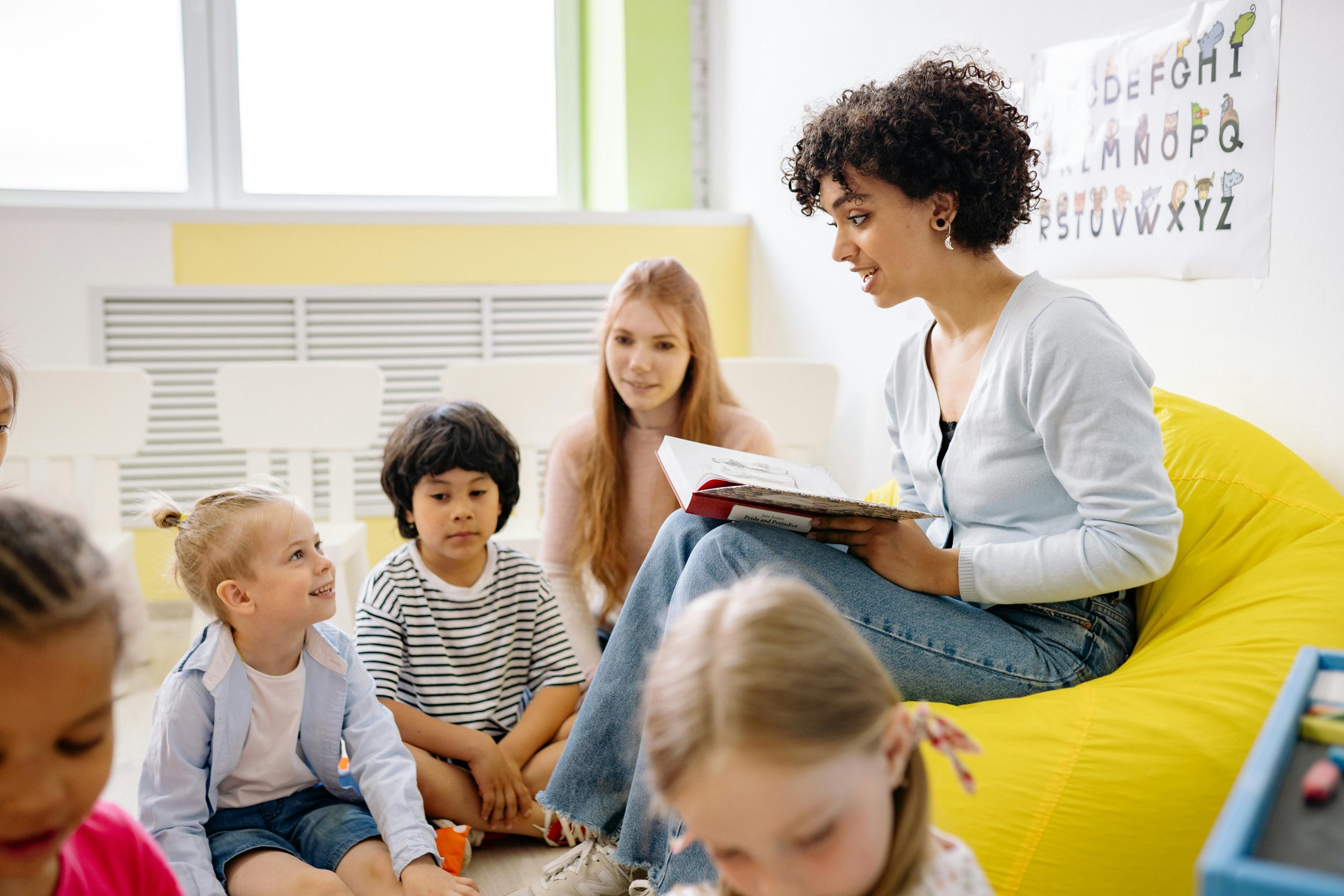Cultural Education Overview

Teaching kids about different cultures is more than just an academic endeavor—it’s a means of developing empathy, encouraging tolerance, and imbuing a sense of global consciousness in them at a young age. Early cultural exposure has many positive effects, including helping developing minds understand the diversity of the world’s societies. This article aims to investigate innovative approaches for integrating cultural education into regular education, making the process both entertaining and informative. One child at a time, we will discover the wonders of the world through storytelling, culinary exploration, and artistic endeavors. Together, let’s set out on this journey to raise a generation that values diversity and comprehends it.
Adding Literary Tales and Cultural Contexts

Choosing books and stories from various cultures is a fundamental aspect of cultural education. It’s about taking a journey rather than just reading a book. Children embark on a journey that takes them through forests, over deserts, and into the lives of people whose experiences are both incredibly different from their own and strikingly similar. This is a crucial selection process. It provides access to previously undiscovered worlds, voices, and tales.
- Imagine the allure of an Asian myth, with costumes that shimmer and sparkle, bringing characters to life before your very eyes, or the magic of hearing an African folktale, with the storyteller’s voice rising and falling like the beat of a drum.
- Props also have an impact, turning the ordinary into the spectacular and adding to the vividness and immersion of each story.
But engagement is more than just hearing. It’s all about connecting, understanding, and empathizing. By acting as a bridge, discussion starters help kids examine their emotions, challenge their preconceptions, and gain new perspectives on the world.
- “If that were you, what emotions would you have?”
- “How could you have approached this differently?”
These inquiries stimulate contemplation, cultivating a more profound empathy and comprehension that surpasses cultural divides.
Cultural stories and literature are not just an extracurricular activity for our kids to learn; they are an essential, enhancing part of their education. It teaches them to embrace the world in all its complexity, to listen with an open heart, and to find beauty in diversity. We give our children the world through stories, so let’s give them that gift.
Combining Global Culinaries

Starting a cooking adventure with your kids creates a fun opportunity for hands-on learning. Cooking traditional foods together is a hands-on experience that introduces you both to the tastes, spices, and cooking methods particular to each culture. It’s not just about having fun. Through our shared activity, we are able to gain insight into the diversity of the world through its culinary traditions.
Food has the ability to tell stories about a culture’s geography, history, and morals. Discover tales about how regional diets are influenced by geographic features, how historical events have influenced culinary customs, and how a community’s beliefs and practices are reflected in its food as you and your child experiment with various recipes. This investigation proves how closely food and identity are related, as stated in the proverb “You are what you eat.”
Consider planning themed dinner nights to add even more value to this educational experience. These celebrations of a culture’s essence go beyond simple meals. Incorporate complementary cultural activities such as dancing, music, or crafting in addition to cooking. This all-encompassing method enhances comprehension of the cultural background of the food while also making the learning process fun.
These kinds of deep experiences are priceless. They use an engaging medium that stimulates all five senses to teach kids about the diversity and beauty of world cultures. Together, you will discover a wealth of global traditions that will enrich your minds and hearts in addition to filling your plates with delicious food from around the world. Let’s turn every meal into an exploration and a step toward comprehending the enormous and dynamic world we live in.
Digital Exploration and Virtual Tours

From the comfort of your home, picture yourself touring the Louvre, exploring the ancient ruins of Machu Picchu, or going scuba diving in the Great Barrier Reef. This is made possible by virtual tours and digital exploration, which provide a button-click window into the world’s museums, landmarks, and historical sites. This technology is ideal for cultural learning because it is both educational and entertaining.
This is further enhanced by interactive games and apps that teach languages and cultural facts to kids in an entertaining way. They can take part in fun, interactive language lessons, solve puzzles that uncover historical secrets, or go on virtual scavenger hunts across cities. These virtual explorations transform studying foreign cultures from a tedious chore into an exciting quest.
Making a list of kid-friendly YouTube channels and documentaries about different cultures can be a great way to enhance these online experiences. These resources provide a wide variety of content, including videos of children from all over the world going about their daily lives and traditional music and dance. Their rich and multifaceted learning experience is enhanced by the visual and auditory feast they offer, which vividly brings distant cultures to life.
A plethora of opportunities arises when we incorporate interactive applications, virtual tours, and carefully chosen digital content into our kids’ education. These resources not only extend their perspectives but also help them develop a profound understanding of the richness and diversity of world cultures. Let’s make the most of technology to teach, motivate, and acquaint our kids with the wide-ranging, dynamic world that exists outside of our boundaries.
Learning a Language via Play

Teaching kids a new language can be just as enjoyable as playing with them. Rhymes, songs, and short phrases serve as the foundation for an exciting new language journey. These components, which are abundant in melody and rhythm, naturally captivate young minds and turn learning unfamiliar words and sounds into a game.
- Flashcards and bilingual books are very useful resources on this trip. Along with introducing new vocabulary, they also offer a visual context that improves comprehension and memory.
- These tools’ simplicity and efficacy are what make them so beautiful; kids can easily draw connections between words and their meanings.
In addition, a plethora of games and apps for language learning tailored especially for kids is another benefit of the digital age. These platforms turn learning a language into an engaging process with obstacles, prizes, and a feeling of accomplishment. Children can learn new languages through play, laying the groundwork for future fluency.
By integrating language acquisition into play, we give our kids access to a world of possibilities. This method not only improves their cognitive functioning but also gets them ready to welcome the diversity of our world community with open minds and wide arms. Let’s incorporate language acquisition into their regular play and observe as they develop into self-assured, astute people.
Involving Yourself with Multicultural Communities
Engaging in community gatherings, workshops, and local cultural events is a vibrant way to introduce your family to the diversity of cultures. These are educational as well as entertaining events that give you a firsthand look at traditions and customs that may differ from your own. Picture your child’s excitement and curiosity when they take part in a traditional dance or craft workshop. It’s live, colorized learning.
- It is equally important to promote friendships with peers from different backgrounds. These connections inherently promote cross-cultural communication that transcends the bounds of textbooks.
- Children learn to value and respect differences through playdates, school activities, and community sports; they see them as bridges to understanding and friendship rather than as obstacles.
Another effective strategy is to volunteer for organizations that promote cross-cultural communication and understanding. Children learn the importance of volunteering and the positive effects of being a part of a diverse community. Children’s perspectives are enriched and they become more accepting and compassionate people as a result of these experiences, which can include anything from helping to plan a multicultural fair to helping in language classes or taking part in cultural exchange programs.
Through these interactions with multicultural communities, we teach our kids about the world and instill in them the virtues of empathy, respect, and curiosity. Let’s seize the chances presented by the diversity of our communities and use every encounter as a springboard for greater inclusivity in the future.
In Conclusion
Young minds are enhanced by cultural education. It encourages a delight in learning and relating. We take kids on an empathetic and diverse learning journey that includes stories, food, and digital exploration. These encounters equip them to prosper in a multicultural society and welcome diversity. Together, let’s keep exploring, learning, and developing to create a more welcoming world for future generations.
Creative Ways to Teach Your Child About Other Cultures FAQs
Yes, music is a powerful tool for teaching kids about other cultures as it conveys emotions and stories that transcend language barriers. By listening to traditional music from around the world, children can learn about the instruments, rhythms, and cultural contexts that shape each genre. Discussing the lyrics (when applicable) and the history of the music can further enhance their understanding and appreciation.
Art can be used to teach kids about cultural diversity by exploring different art forms, techniques, and symbols used by artists from various backgrounds. Creating art inspired by different cultures or participating in multicultural art workshops can provide hands-on learning experiences. Discussing the meaning and history behind the artworks can also foster a deeper understanding and respect for the diversity of human expression.
Introducing your child to other cultures through food involves exploring recipes, ingredients, and traditional meals from different countries. This not only broadens their palate but also opens up discussions about the history and significance of each dish. Cooking together can be a fun and interactive way to learn about cultural practices and the stories behind them.
Language learning encourages cultural understanding in children by giving them the tools to communicate with and understand people from other cultures directly. It opens up opportunities to explore cultural nuances, idioms, and expressions that are unique to each language. Engaging with native speakers and consuming media in the target language can further deepen their appreciation and insight into the culture.
Travel can be an exceptional educational tool for teaching children about other cultures by providing them with firsthand experiences of different ways of life. Planning trips to cultural landmarks, museums, and local markets can offer immersive learning opportunities. Preparing for the trip by learning about the destination’s culture, language, and customs can enhance the educational value of the travel experience.
Technology offers creative ways to teach children about other cultures through virtual tours, online language lessons, and cultural exchange programs. Virtual reality experiences and interactive apps can bring distant places and traditions right into your living room, making the learning process dynamic and immersive. Additionally, connecting with peers from around the world through pen pal programs or cultural exchange apps can provide a personal touch to their learning experience.
Celebrating cultural diversity at home can be effective by hosting international dinner nights, where each family member learns about and prepares a dish from a different country. Creating a world map project that highlights countries you’ve learned about together, including their customs, languages, and festivals, can visually reinforce the diversity of cultures. Additionally, encouraging the collection and sharing of stories from friends, family, or community members from different backgrounds can bring personal and relatable insights into the richness of cultural diversity.
Teaching children about cultural festivals can be done by participating in local events or creating your own festival at home. This allows them to experience the music, dance, and customs firsthand, making the learning process engaging and memorable. Additionally, reading stories or watching documentaries about these festivals can provide deeper insights into their meanings and origins.
Incorporating learning about other cultures into everyday activities can be as simple as listening to world music during car rides, watching international films during family movie nights, or playing games from around the globe. These activities naturally integrate cultural education into daily life, making it a regular part of your child’s routine. Discussing the experiences and learning points after each activity can reinforce their understanding and curiosity.
Books play a crucial role in educating children about different cultures by providing them with a window into the lives, traditions, and perspectives of people from around the world. Picture books, stories, and non-fiction texts can introduce children to the vast diversity of the world in an accessible and engaging way. Reading together and discussing the content can also encourage empathy and curiosity about other ways of life.

Jasmine Duque-Love is a mother of one and a practicing physiotherapist with a Phd in Physiotherapy

